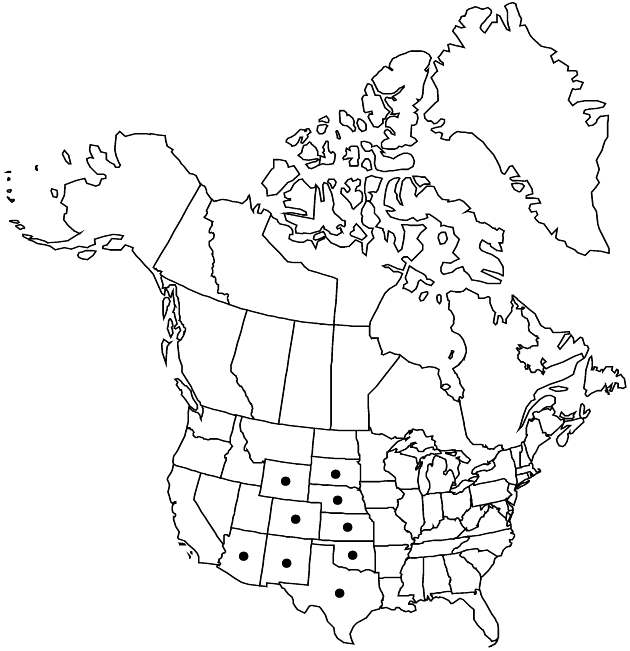Senecio riddellii
Fl. N. Amer. 2: 444. 1843.
Subshrubs, 30–100 cm (taproots forming woody crowns). Herbage glabrous. Stems usually multiple (branching upward). Leaves ± evenly distributed (proximal often withering before flowering, pendulous); sessile or obscurely petiolate; blades linear-filiform (or irregularly pinnately divided into linear-filiform lobes), blades or lobes 4–9 cm × 1–5 mm, bases ± linear, ultimate margins entire. Heads 5–20+ in close, corymbiform arrays (involucres campanulate, 7–10 mm diam.). Calyculi usually of 3–8+ lance-linear to filiform bractlets (lengths 1/10–1/3 phyllaries). Phyllaries ± 13, 7–10 (–12+) mm, tips green. Ray-florets ± 8; corolla laminae (often falling early) 8–10 mm. Cypselae hirtellous. 2n = 40.
Phenology: Flowering mostly mid summer–fall, occasionally spring.
Habitat: Sandy or rocky open sites, especially drying, open, flood plains
Elevation: 600–2500 m
Distribution

Ariz., Colo., Kans., Nebr., N.Mex., Okla., S.Dak., Tex., Wyo.
Discussion
Senecio riddellii intergrades morphologically with S. spartioides. Typically, the former has larger heads with campanulate involucres 7–10 mm diam.; the latter has cylindric involucres rarely more than 6 mm diam.
Senecio riddellii is poisonous to livestock. It is now locally scarce because of efforts to eradicate it.
Selected References
None.